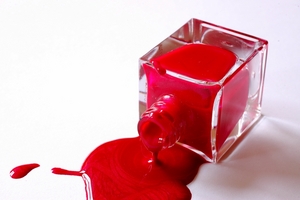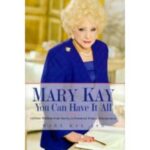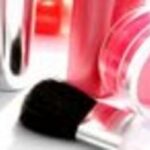Selling Mary Kay cosmetics is promoted as “full-time pay for part-time work”, and the recruiting literature implies (heck, it often blatantly claims) that you can make thousands of dollars selling makeup and skin care as an Independent Beauty Consultant. After a predator in pink stalked me, I decided to investigate whether the Mary Kay home business opportunity really provides the average woman with enough income as a Mary Kay Independent Beauty Consultant to replace an entry-level, minimum-wage, unskilled or semi-skilled job such as burger flipper, Wal-Mart greeter, or convenience store cashier.
The Data and the Assumptions
To avoid accusations of unfairness, I will use the data that directors made available, and use their methods to estimate the profits for the consultants. Dozens of active Mary Kay Directors of all ranks made retail sales data from their units available to me. The data contained 4 consecutive months of sales data from 7,912 IBCs across the USA, representing the potential sale of $2,503,720.85 in product.
I know, from reading the training material that the directors also made available to me, that directors put pressure on their downline unit members to keep inventory on hand. “You can’t sell from an empty store” is a recurring phrase. The recruiting and training material also shows that consultants are encouraged to use their credit cards, take out small bank loans, borrow from relatives, beg from friends, borrow against their life insurance, and even pawn items in order to “stock the store” with several thousand dollars of inventory.
And I know, also from the training material, that part of the proceeds from sales should go to repaying these loans. But let’s pretend that doesn’t happen. Let’s pretend that this is zero-inventory, just-in-time ordering, with customers who don’t mind waiting. Therefore, I’ll assume that every estimated retail sale makes an immediate profit for the IBC, because she has no money tied up in inventory and didn’t borrow money.
Mary Kay offers a potential profit of 50%. If you order enough product in a single order you get a 50% discount off the suggested retail price. You then sell it at full list price – twice what you paid. Many of the training materials recommend offering discounts and “gift with purchase” items to drum up sales. But let’s pretend that isn’t necessary. Let’s pretend that the customers are willing to pay full retail price for everything. For the purposes of this analysis, I assume that all IBCs buy at the full discount price, sell at the full retail price, and do not give away “gift with purchase” items.
Profit Assumptions
The formulas I used to estimate income are taken from training and recruiting material that was made available to me by the active Mary Kay sales directors. Where this material gave differing values, I accepted the material that was most favorable to Mary Kay – whatever gave the lowest expenses and the highest profits.
NSD Diana Sumpter’s worksheet on money management estimates this: 50% of the gross income is the cost of buying the discounted product. Another 5% should go to buy non-retail items such as catalogs, and 5% to buy “hostess gifts” for the sales parties. That leaves 40% of the gross income to cover taxes, other business expenses such as gas and babysitters, and provide the IBC some income from her business.
For example, an IBC sells $1000 retail to her customers in one week. $1000 a week sounds pretty good. But she has to pay her suppliers and the tax man: $500 pays for the product, $50 is budgeted for catalogs and samples, $50 is budgeted for hostess gifts, and $400 is left to pay the other business expenses. The government takes about $50 for taxes. She has $350 left to pay her other expenses, such as postage, gas, meeting fees, and office supplies. Let’s assume the average expenses are $50 a week, leaving her with $300 (30%) of her sales as spendable money.
This agrees with other estimates that 1/3 of the retail dollars will turn into the equivalent of “take-home pay”, so I use the 1/3 rule for fast calculations.
Is it a business opportunity?
Do some quick arithmetic … the total sales divided by the number of consultants in the study gives an average monthly sales of $316.45 per consultant. That is depressingly low, so I made a spreadsheet to show how the group compared to ordinary employees working for an hourly wage. Maybe some consultants were working their business the way the training literature tells them to and making a lot of money while others were slackers.
I compared Mary Kay IBCs’ incomes to the current federal minimum wage: $5.15 an hour. Minimum wage in some states is higher than that, but I’m trying to make Mary Kay look as good as possible.
10 hours a week @ minimum wage = $200 a month take-home pay. To make that much money in MK sales, you have to consistently sell $600 a month (only 1/3 is spendable, remember?). How many do that? Only 995 of the 7,912 consultants (12.6%) are selling enough to equal or exceed the take-home pay of a teenager who works 10 hours a week as a minimum-wage burger flipper after school.
32 hours a week @ minimum wage = $600 a month take-home pay. To make that in MK sales, you have to consistently sell $1800 a month. How many do that? Only 142 of the 7,912 consultants (1.8%) are selling enough to equal or exceed the take-home pay of someone who works 3 days a week as a minimum-wage Wal-Mart greeter.
40 hours a week @ minimum wage = $825 a month take-home pay. With this kind of job, you might even get paid vacation, health insurance and other benefits, which you do not get from Mary Kay until you reach exalted rank. To make that in MK sales, you have to consistently sell $2400 a month. How many do that? Only 41 of the 7,912 consultants (0.52%) are selling enough to equal or exceed the take-home pay of someone who works 40 hours a week as a minimum-wage cashier at a convenience store.
So where is the money coming from for all the bling that adorns the upline top level directors, and how do they buy their McMansions in the ‘burbs? It’s the “vigorish” trickling up from the bottom levels as commissions and bonuses, of course. Part of the money from everything an IBC buy is diverted into the “love checks” the directors flash at recruiting meetings. The wholesale cost of the cosmetics is inflated to pay for the bling. All the bonuses for recruiting, for sales, and even the payments on the pink Cadillacs are paid for by inflating the cost to the IBC.
The formulas for calculating who gets how big a piece of the pie are complex, but if I interpreted them correctly the possible commissions for the sales data I saw are at least $500,000 in four months. That’s serious bling-money for the ladies at the top. It doesn’t include recruiting bonuses or the car leases because that data was not available.
Conclusion: Being a Mary Kay consultant is not a home business opportunity. Mary Kay Cosmetics and the upline high-ranking directors are running a zero-sum game, like a lottery or a casino. All of the income the few at the upper levels are bragging about comes from the losses of the downline thousands of struggling consultants at the bottom of the … dare I say it … the pyramid! It’s just another MLM, selling the dream.
Reference:
- $4.52 an hour !






